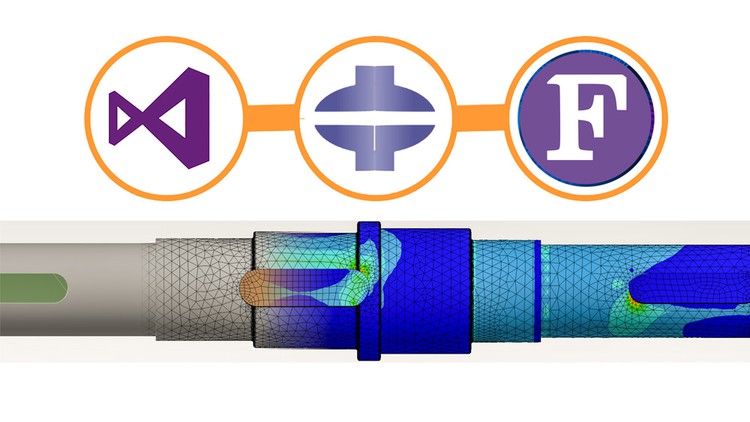
Define complex or unusual and novel material models that are not available by default in ABAQUS.
What you will learn
When do you need to use?
How to use UMAT and VUMAT Subroutines?
What is the Difference between material subroutines like USDFLD(VUSDFLD), UHARD(VUHARD), UHYPER, and UMAT(VUMAT)?
What is the difference between UMAT and VUMAT Subroutines?
How to convert UMAT to VUMAT and vice versa?
What are the Complete theories about hook’s law and implementation in the subroutine?
What is the flowchart of writing different UMAT and VUMAT subroutines?
How does ABAQUS solve the problem by these subroutines step by step?
What is the difference in the method of solution for ABAQUS/standard and ABAQUS/explicit?
Where different user subroutines (like CREEP, FRIC, UEL, UEXPAN, UGENS, USDFLD, UMAT, DLOAD, FILM, HETVAL, UWAVE and etc.) fit into Abaqus in solving the proble
How to calculate the jacobian matrix in UMAT?
How to familiar with different types of equations, applications, and how they are derived for elastic material like isotropic, orthotropic, anisotropic in diffe
what is the difference between time variables like DTIME, KINC and, etc.?
Which articles could help to write subroutines?
How to write the subroutine line by line?
How to add subroutines inputs and setting to use the subroutine in GUI of Abaqus?
How to Simulate the problem in beam model with Abaqus and subroutine and compare with each other to verify the written subroutine?
Description
Introduction to UMAT Subroutine (VUMAT)
During the process of solving each problem, ABAQUS uses a specific program to relate the strain to the stress (the material model). So, If we can not use the material model in ABAQUS/CAE, the user should write the subroutine format known to ABAQUS as UMAT subroutine (in standard solver) or VUMAT subroutine (in explicit solver).
In fact, this subroutine is used to define complex or unusual and novel material models that are not available by default in ABAQUS.
Indeed, this tutorial package contains basic principles and concepts along with practical examples to get acquainted with this subroutine. In the other words, the ultimate goal of this tutorial is to give the user the ability to write UMAT subroutine and VUMAT subroutine to define the mechanical behavior of materials and introduce them to the ABAQUS software.
Writing advanced UMAT Subroutine for Non-Isothermal Elasticity
When the elastic behavior of material becomes temperature-dependent, the elastic equations for calculating strain and stress will be different. In this workshop, the process of obtaining these temperature-dependent equations is first explained. In the following, the complete equations used in Subroutine are visible and we explain the implementation of the subroutine line by line in Fortran.
Content